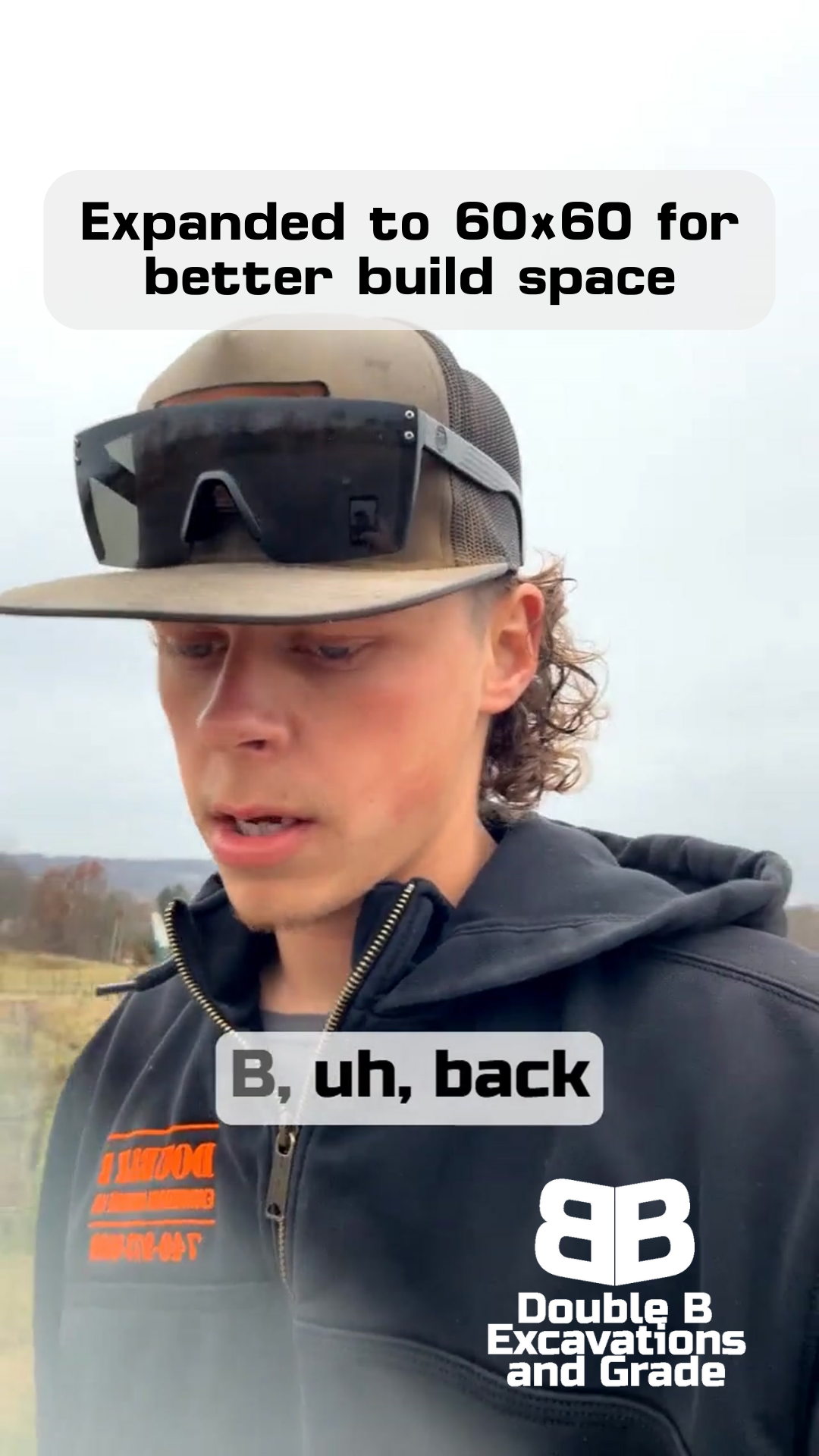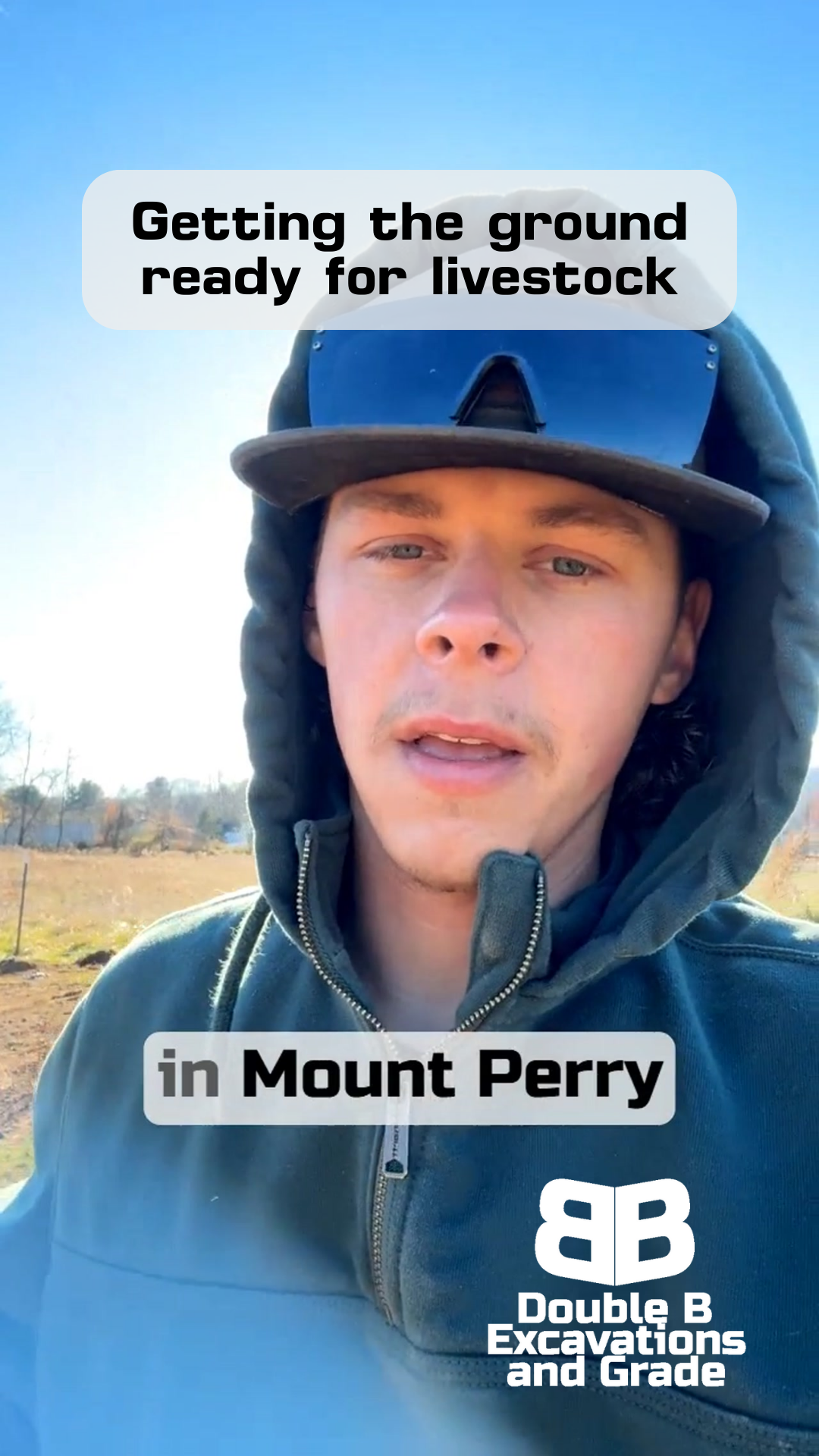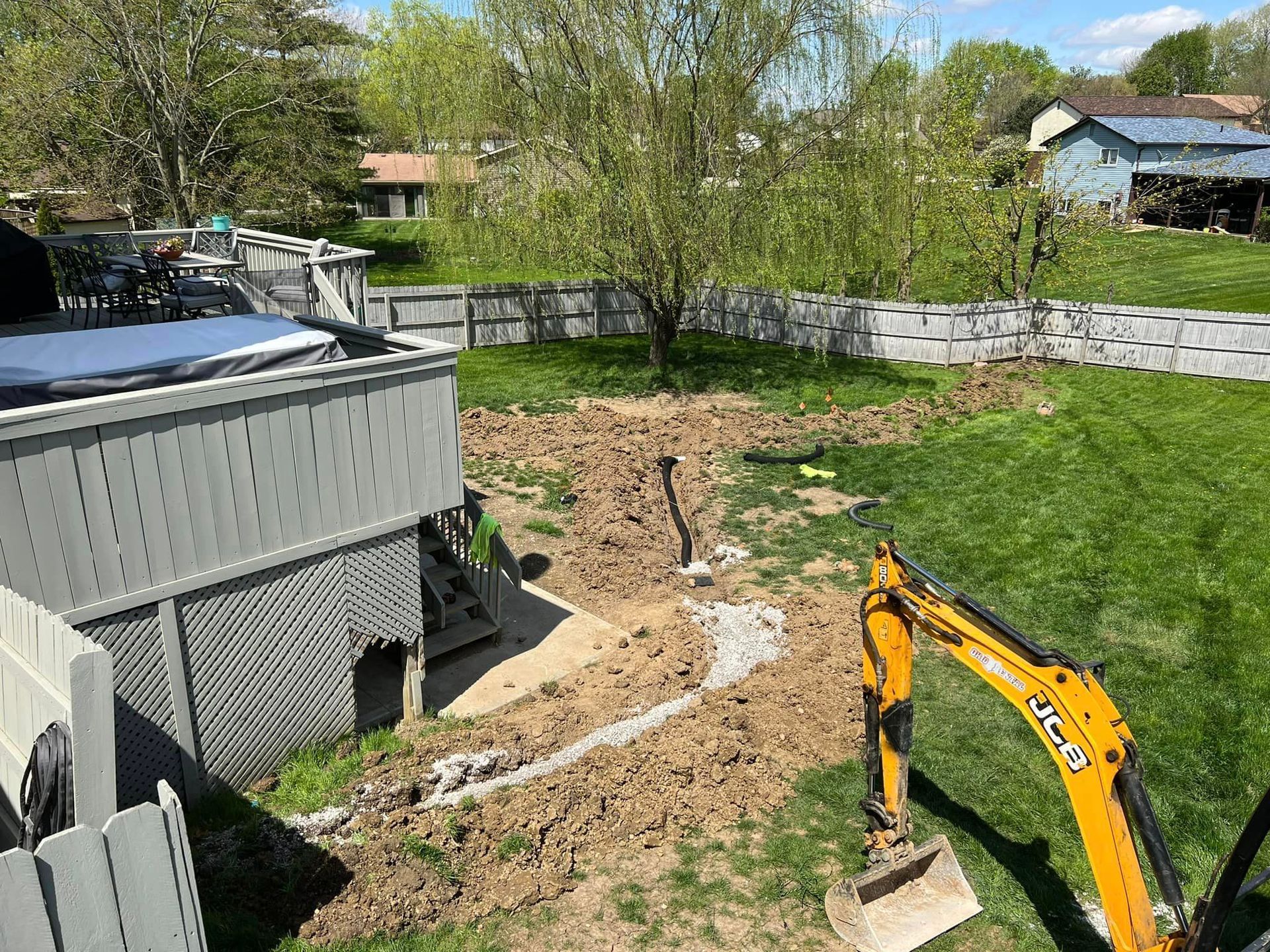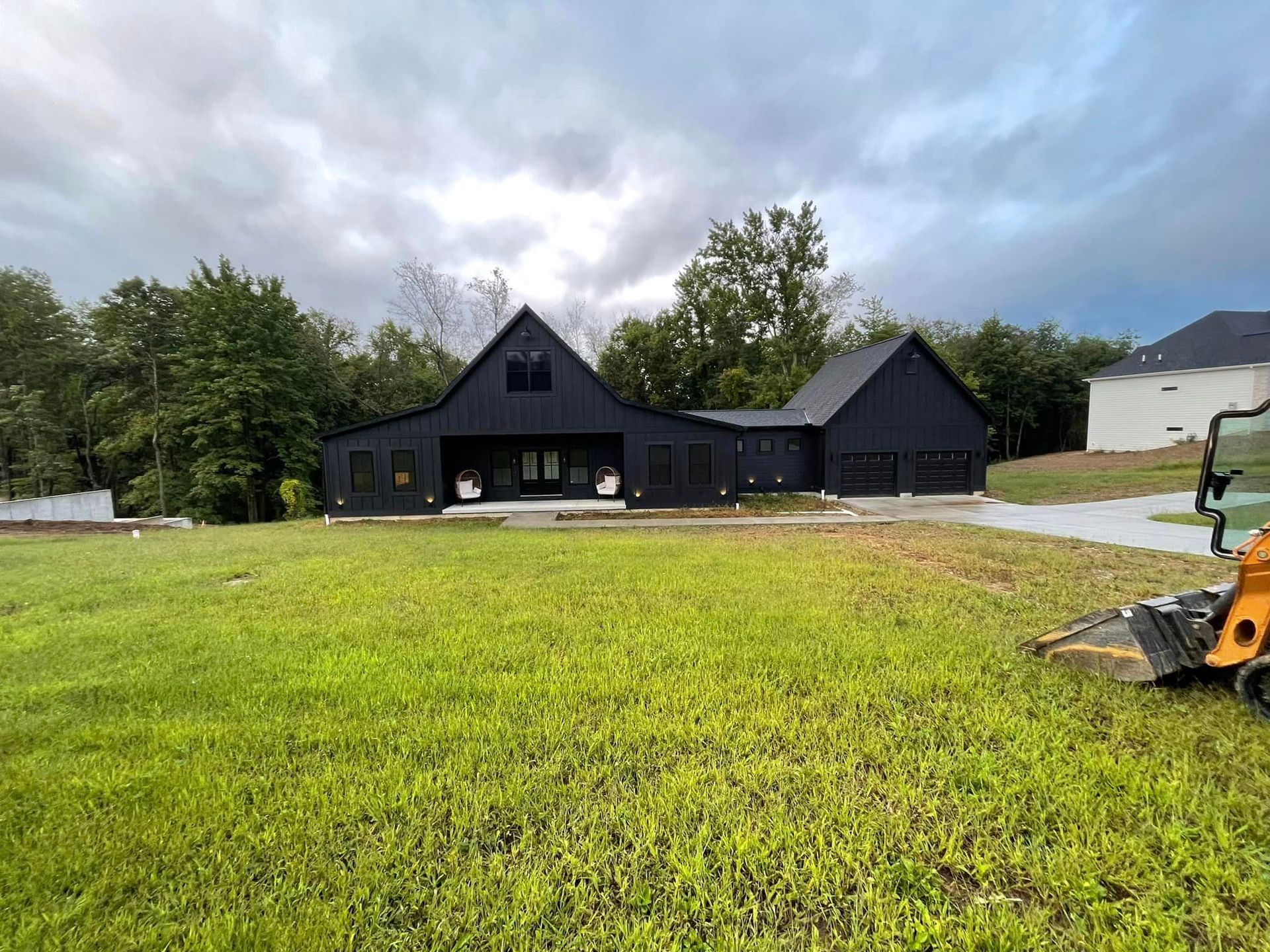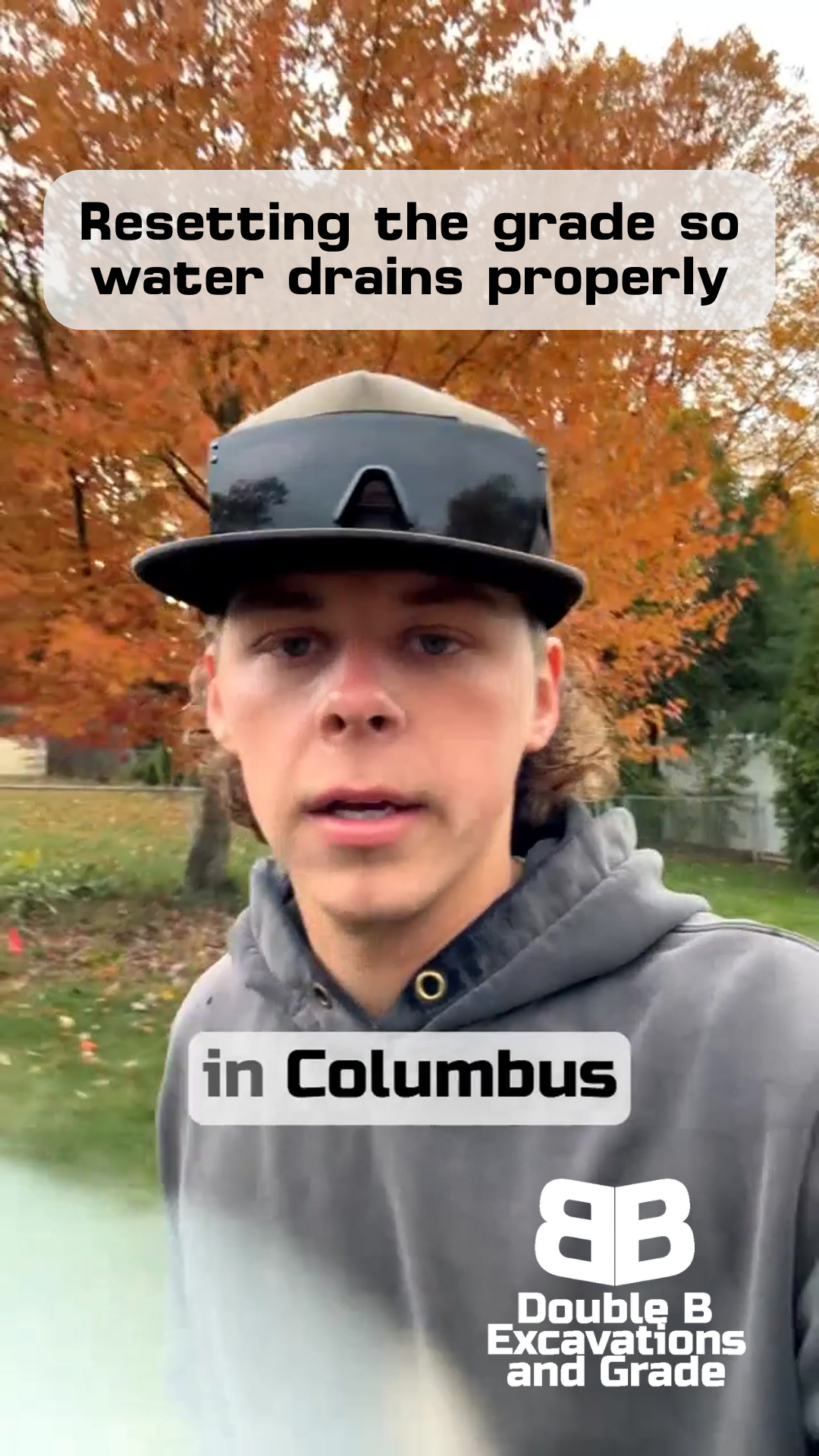From Underwater to All-Weather: Transforming a Pickerington Driveway That Actually Works
Double B Excavations & Grade LLC
Drainage Before Driveway
DOING FIRST THINGS FIRST CAN HAVE BIG BENEFITS
When half an inch of rain falls overnight in Pickerington, it usually means construction sites shut down.
But not for us - not today.
While other contractors might be waiting for things to dry out, we're out here laying 40 tons of asphalt millings.
Why? Because we did something most people skip: we handled the drainage first.
That might not sound exciting, but when you've got a driveway that used to flood every time it rained, seeing it stay dry after a storm is better than any commercial on TV.
It's proof that doing things the right way, even if it takes longer, really pays off.
Welcome to Double B!
The Initial Challenge
When we first came out to look at this Pickerington property, the driveway was underwater. Not just a few puddles - we're talking about the kind of flooding that makes you wonder if you should've brought a boat instead of a truck. It's a problem we see all too often: someone builds a driveway without thinking about where all that rainwater's going to go.
You might think the solution is just to add more gravel or build the driveway up higher. We've seen plenty of people try that approach. But here's the thing - water's always going to find somewhere to go. If you don't give it a proper path, it's going to make its own, usually right through your driveway.
What made this project different wasn't just the amount of water we were dealing with. It was the opportunity to solve the problem from the ground up. Instead of putting a band-aid on it, we got to do it right - starting with what goes underneath, not what goes on top.
The Right Approach
Here's something we've learned over years of experience: you've got to work with water, not against it. That's why we started this project by putting in 1,200 feet of drainage swales - think of them like carefully planned paths that guide water where we want it to go. Then we added another 200 feet of culvert piping and installed three strategic culverts.
Now, when we say culverts, we're not talking about those ugly ditches that are a pain to mow around. We actually buried these pipes and backfilled them properly. This way, the homeowner can mow right over them like they're not even there. It's about making solutions that work and look good too.
The Solution in Action
Fast forward to today - we're laying down 40 tons of asphalt millings, and Easton's out there with the roller making sure everything's compacted just right. But the real test? That came with last night's rain.
Here's what makes us proud: while that half-inch of rain would've had the old driveway underwater, our drainage system handled it perfectly. Every drop of water knew exactly where to go, thanks to those swales and culverts we installed. The driveway stayed dry, and we're able to keep working.
Sure, we're taking a little longer than we originally planned. But when you're doing something right, sometimes it takes extra time. The important thing is that every step we take is building toward a driveway that's going to work in any weather, not just on sunny days.
Why Details Matter
You might wonder why we spend so much time talking about drainage when we're supposed to be building a driveway. But here's the truth: what you don't see under the surface matters more than what you do see. When a driveway fails, it's usually because someone skipped these crucial steps.
Think about it this way - when other contractors have to pack up and go home because of a little rain, their customers are stuck with a muddy mess. But our customers? They get to use their driveways rain or shine. That's not just about convenience - it's about getting what you paid for: a driveway that actually works.
Wrapping it Up
We've still got work to do out here in Pickerington. There's more asphalt millings to lay and more compacting to finish. But seeing how well everything handled last night's rain tells us we're on the right track.
If you've got a driveway that turns into a pond every time it rains, remember this: fixing the drainage first isn't just an extra step - it's the most important step. Sure, it might take a little longer and cost a little more up front. But when the next storm rolls through, you'll be glad we did things in the right order.
Because at the end of the day, we're not just building driveways. We're solving problems that other contractors either don't see or don't want to deal with. And there's nothing better than driving past one of our finished projects during a rainstorm and seeing everything working exactly like it should.
